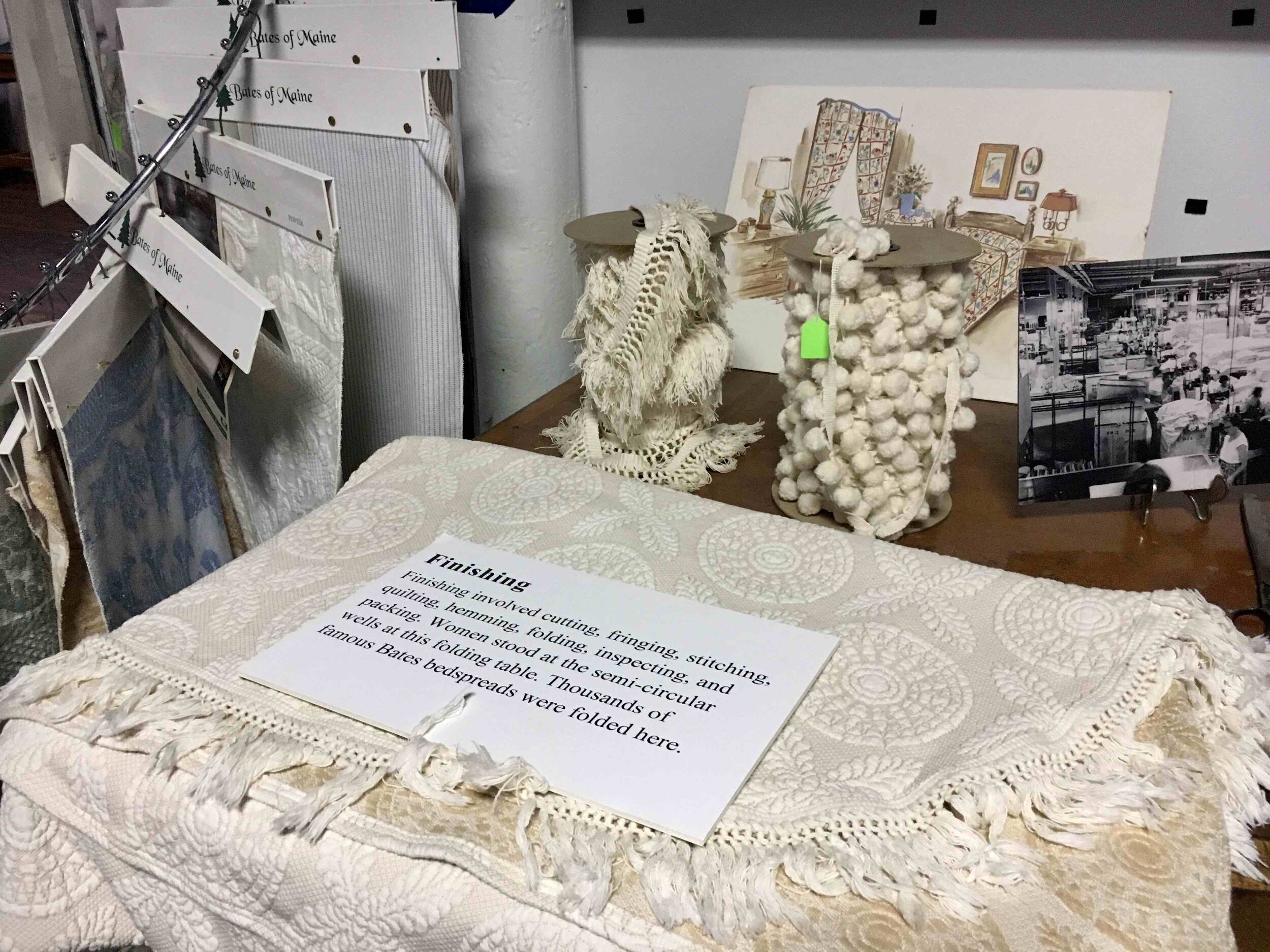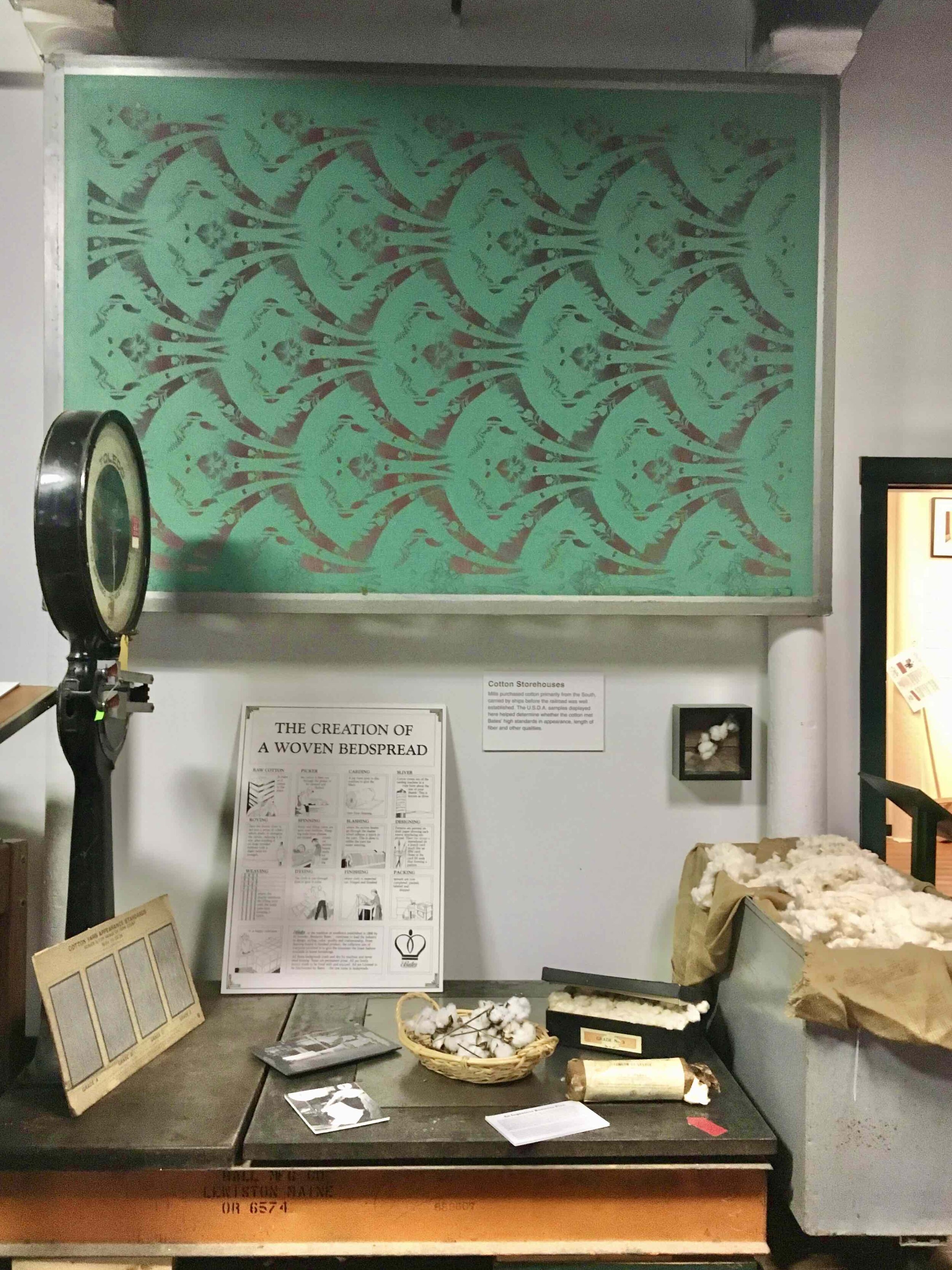T = Textile Mills
We’ve made it all the way to the letter “T” in my alphabet series on “This Maine Life.” For this post, I chose something from our state’s history: the textile mills. Looking through some personal notes and photos, I found reminders of a November 2018 trip I made to the former Bates Mills in Lewiston which I am happy to share with you. In the 19th and 20th centuries, Lewiston was home to Maine’s largest mills, but Augusta, Biddeford, Brunswick, Saco, and Waterville were also heavily involved in this industry.
Benjamin Bates — whose last name can be found all around Lewiston today — was born in Boston, but lived in Maine for part of his life. He visited Lewiston with Congressman Alexander DeWitt in 1847. The railroad was chartered the same year which caused Bates to be interested in investing in the city now that it had improved transportation capacity. He quickly raised money in Boston and began digging canals and building the mills.
According to local historian Douglas Hodgkin, this activity prompted a population boom. Irish immigrants were the primary laborers during the early stage, but others quickly followed. Lewiston's population doubled in 1850, 1860, and 1870. In the midst of it all, the city of Lewiston was incorporated and organized in 1863. The mills were the primary driver of this growth. By the 1880s, the Bates Mill Complex alone employed 3,000 workers.
On a torrentially rainy Saturday morning, I visited this former mill complex which is home to Museum L-A (Lewiston-Auburn, for those readers from away). Due to the weather, no other guests were on site so I had an uninterrupted tour by Kate Webber who was serving as the director of education and outreach (she has since moved on to work at the Maine State Museum in Augusta).
Upon entering the museum, visitors are given a badge to wear during the tour. On it is the name and story of a former worker. It’s a great way to honor those who contributed much to this industry. I "was" Dot McAtee for the morning. Her godmother worked at the Bates Mill and is the one who influenced her to also find employment there. Dot took pride in her work as a weaver. On the back of the badge was the following quote from her:
It's a good feeling when you go into a store or open a magazine and can say, "I made that...because not everybody on the street can do this."
The item that was often spotted in the stores or magazines was the famous Bates bedspread. At the height of production, 200,000 of them made in this complex were sold annually. The original design was based on bedding that Mr. Bates noticed during a visit to Mt Vernon. He created a similar piece, called it "George Washington's Choice," and the rest is history.
Kate showed me the entire process of making the bedspreads. I was mentally lost about a quarter of the way in! What a complex series of tasks which included twelve major steps. All of it was done in-house — starting with the bales of raw cotton which arrived by train and ending with the finished bedspreads being packed for shipping.
The craftsmanship was astounding, particularly in the designs which were created, the dyeing process, and the punched cards that guided the machines.
Without question, the mills had a profound impact on the local community for generations. Bedspreads are no longer produced in these giant buildings. Bates Manufacturing closed in 2001, but the great brick structures are now being transformed into spaces for new businesses and apartments.
This post is part of my A to Z Challenge Series with the overall theme, “This Maine Life.” I am covering a Maine-related topic with a different letter of the alphabet every day except Sundays throughout the month of April 2020.




